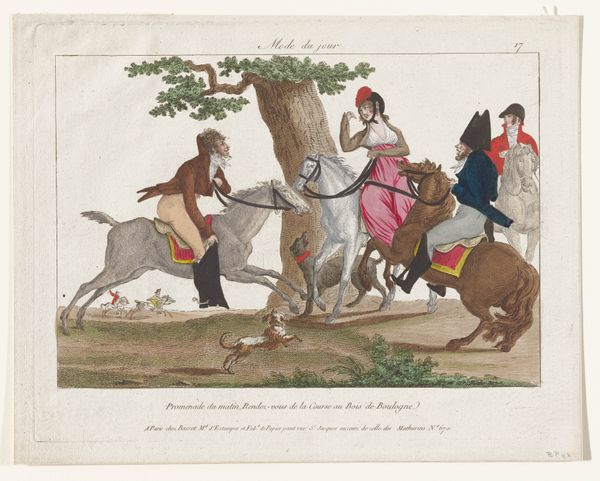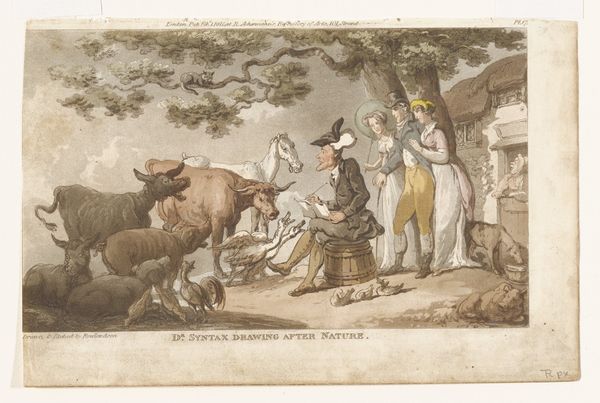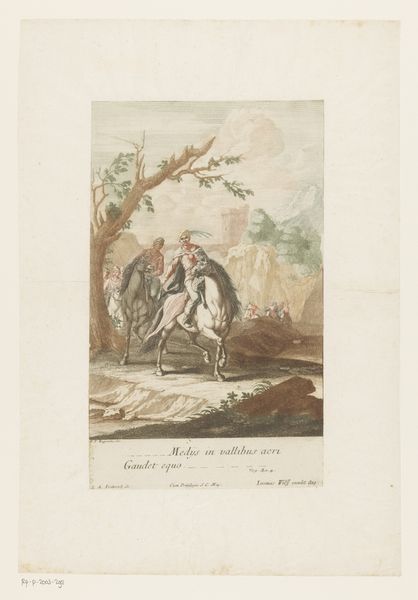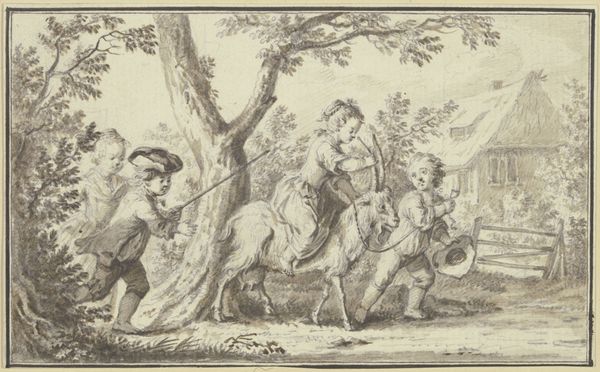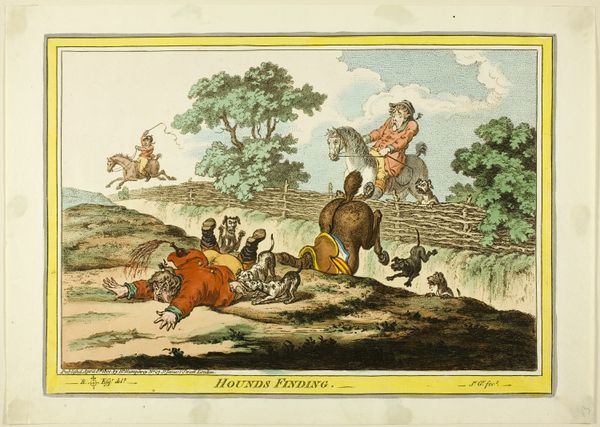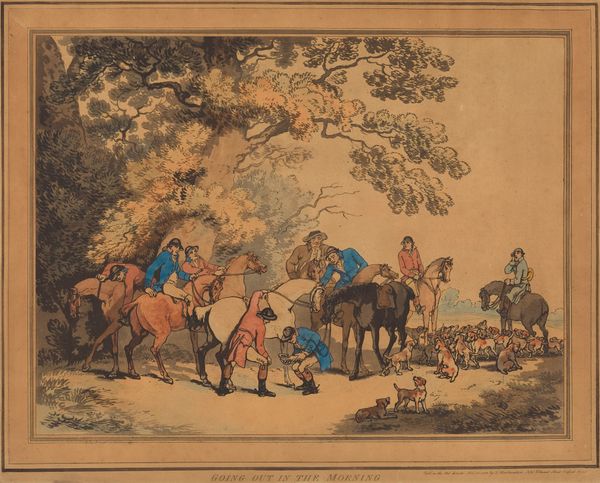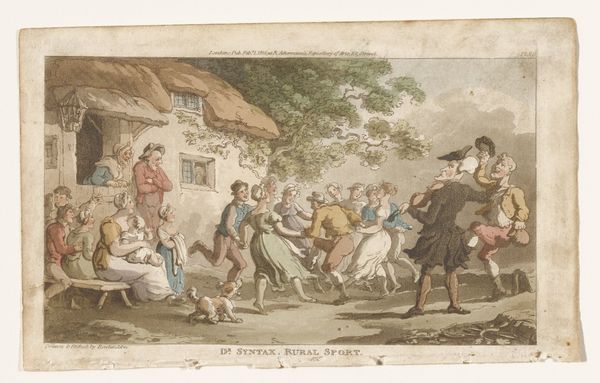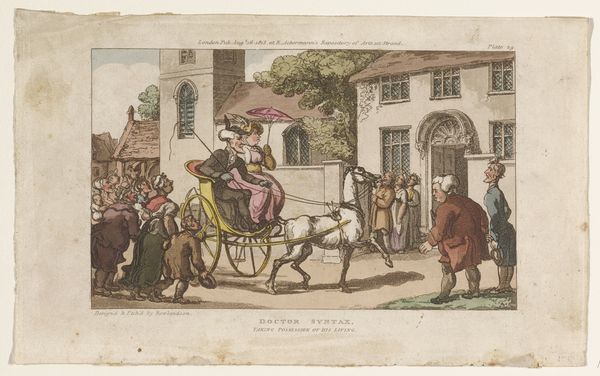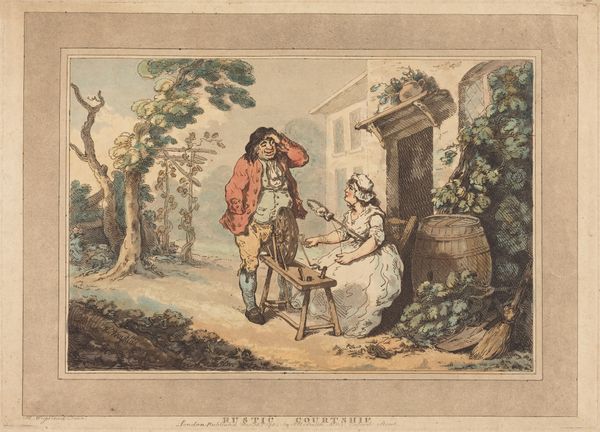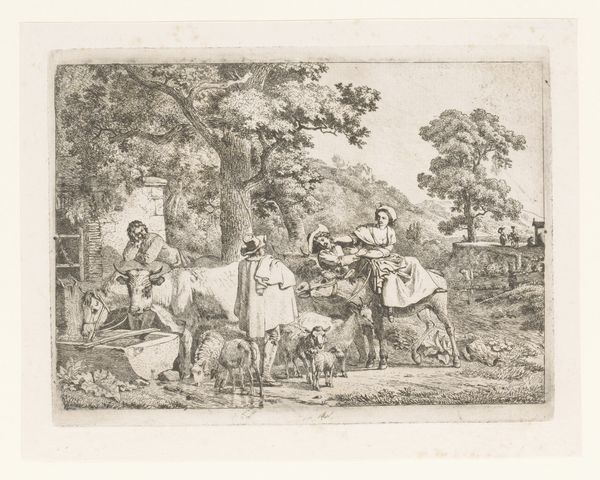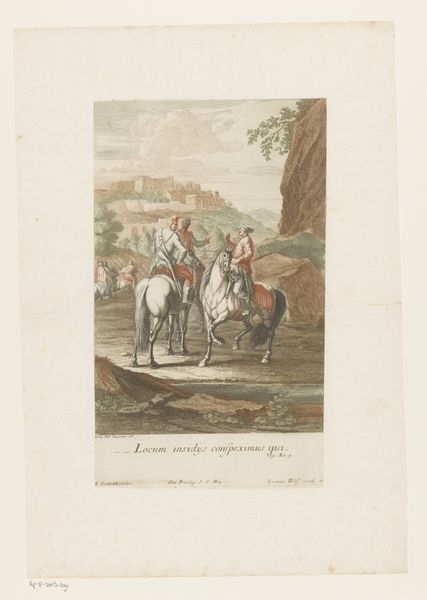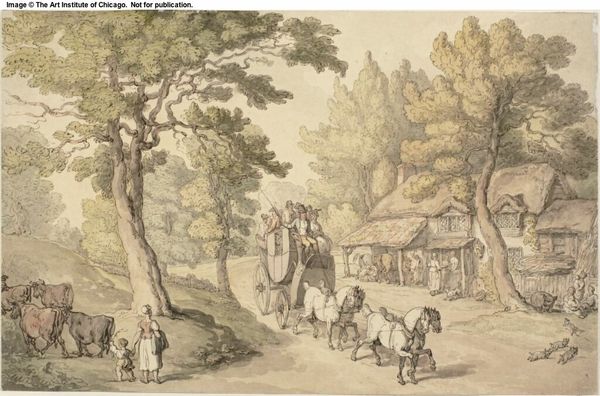
Doctor Syntax Bound to a Tree by Highwaymen 16 - 1813
0:00
0:00
Dimensions: 5 1/2 x 9 1/4 in. (13.97 x 23.5 cm) (sheet)
Copyright: Public Domain
Thomas Rowlandson made this print, "Doctor Syntax Bound to a Tree by Highwaymen," using etching and hand-coloring. It's a relatively reproducible image that could reach a wide audience, a comment in itself on the democratization of art. The etching process involves using acid to bite lines into a metal plate, which are then inked and printed. In this case, the etched lines create the contours of the figures and landscape, while the watercolor adds depth and emotion. Look closely, and you'll notice the somewhat slapdash application of the pigment. This suggests a workshop context, where the division of labor was key to keeping costs low. The print’s narrative element also speaks to the context of its making. Highwaymen were a real threat in 18th and 19th century England, preying on travelers. The print captures a specific social anxiety of the time. Ultimately, "Doctor Syntax Bound to a Tree by Highwaymen," shows us how art can be both a reflection of and a participant in social and economic forces. It underscores the importance of considering the means of production in understanding art's full meaning.
Comments
minneapolisinstituteofart almost 2 years ago
⋮
Rowlandson's Doctor Syntax The Tours of Doctor Syntax was an immensely successful series; Rowlandson produced the pictures, which were made into a story by the author William Coombe, who wrote poems to accompany them. Three satirical books were published (1809-21) that follow the hilarious misadventures of a foolish clergyman and schoolmaster, Dr. Syntax, a kind of English Don Quixote. The absurdity of Syntax's character and mishaps incisively mock the customs of the day. Rowlandson devoted most of his time to magazine and book illustration in the second-half of his career, working primarily for the enterprising publisher, Rudolph Ackermann (1764-1834), who printed the Doctor Syntax series. Rowlandson's later activities mark a gradual shift in the caricature genre, when publishers and artists moved away from the production of single, high-quality, expensive prints to the cheaper comical cartoons that were featured in widely distributed magazines. Weeklies like Punch and the Illuminated Magazine were founded in the 1840s and would become a staple of Victorian England. Caricature in this new era served more frequently as illustrated journalism, with cartoons representing an editorial point-of-view, often produced by professional illustrators hired by magazines.
Join the conversation
Join millions of artists and users on Artera today and experience the ultimate creative platform.
